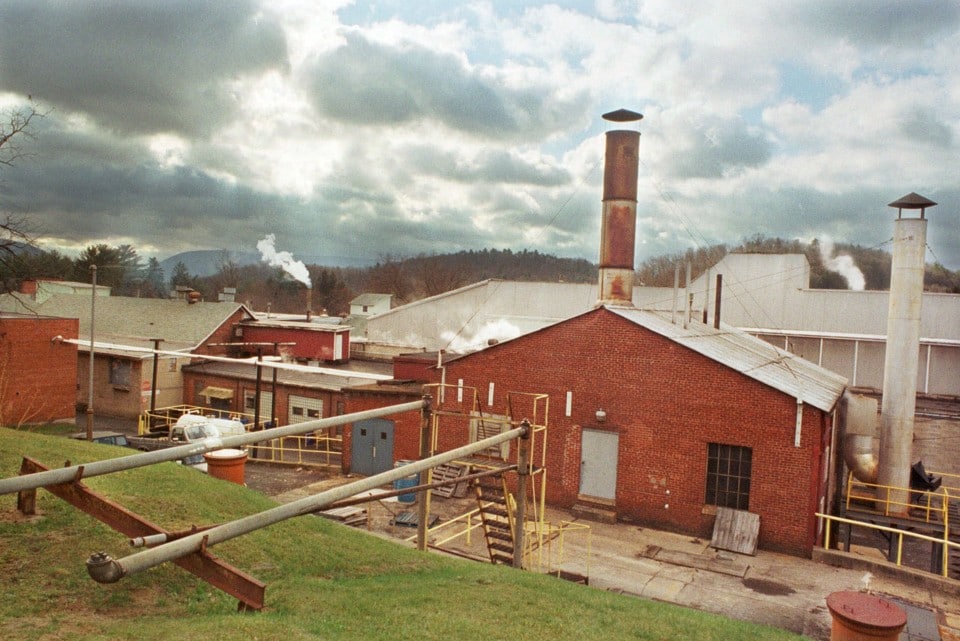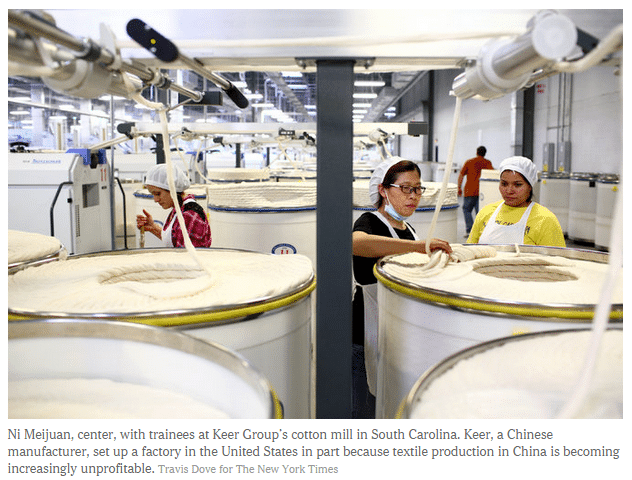Trans-Pacific Partnership Threatens Manufacturing in USA
Some firms have slowly been moving operations back to the U.S. Will the new TPP trade deal undo the progress?
Not all of the dire predictions about the North American Free Trade Agreement (NAFTA) turned out to be true, but Ross Perot, who expected a “giant sucking sound going south,” was right—in part. Companies did move jobs to Mexico after the trade agreement went into force in 1994. Robert E. Scott, of the Economic Policy Institute, calculates that the U.S. has lost 700,000 jobs as a result of growing trade deficits with Mexico, and says that 65,000 manufacturing plants in the U.S. have closed since 2001.
Of course, not all of those closings were related to NAFTA—some had to do with companies moving operations to China or other low-cost Asian countries. There are now 12 million manufacturing jobs in the U.S., down 30 percent from 1990. Even with that reduced number, manufacturing still accounts for 35 percent of America’s gross domestic product.
Now that the U.S. and 11 Pacific Rim nations have agreed on the Trans-Pacific Partnership, or TPP, those who follow manufacturing are looking with new scrutiny at the deal, which will now come before Congress. There’s been a resurgence of manufacturing in the U.S. after all, a movement called “onshoring” in which companies move jobs from overseas back to the U.S. Wages in China are rising, and companies are finding that they have better control over quality with U.S. manufacturing operations. Walmart in 2013 announced that it would spend $50 billion buying U.S.-made goods. Whirlpool has shifted some production back to the U.S. from Mexico, and Otis Elevator moved some operations from Mexico to South Carolina. Since 2010, the nation has added nearly one million manufacturing jobs.
“The trend in manufacturing in the United States is to source domestically,” Harry Moser, the founder of the Reshoring Initiative, told Knowledge@Wharton. “With 3 to 4 million manufacturing jobs still off shore, we see huge potential for even more growth.” Decades after NAFTA, economists are asking—will this new, giant trade deal endanger the manufacturing gains of recent years?
“That trickle of jobs moving back that I think is going to grow into a bigger trickle: This is a speed bump for it,” said Wally Hopp, a professor at the University of Michigan’s Ross School of Business, said about the TPP. “At least certain products are going to suffer from it—with the tariff situation, all of a sudden, it’s easier to stay offshore.”
The nitty-gritty details of the TPP are still not public, but it’s known that the agreement seeks to gradually reduce trade barriers such as tariffs among member countries, which include Japan, Vietnam, and Malaysia. It adds intellectual property protections for certain products, including pharmaceuticals. It does not include rules on currency manipulation, which had disappointed some groups, because currency manipulation allows countries such as China to ensure that their goods are cheaper than U.S.-made goods. (Some economists believe that currency-manipulation provisions could make it more difficult for the U.S. to control its own currency and interest rates.) Hillary Clinton, who had formerly supported the TPP, said Wednesday on PBS NewHour that she opposed the pact because of the lack of currency manipulation rules and because of the sweet deal it gives to pharmaceutical companies. The deal also does not include China, the world’s second-largest economy, but is instead meant to increase the U.S.’s clout in Asia and make it easier to compete with China.
“Expanded trade through these agreements will contribute to higher incomes and stronger productivity growth over time in both the United States and other countries,” wrote a handful of economists, including Alan Greenspan and Ben Bernanke, in a letter to Congress. U.S. businesses will be able to sell more in overseas markets, the economists argue, and U.S. consumers will be able to have access to more affordable goods.
Related Article: The TPP & Manufacturing – Fast Track to Poverty[p][/p]
But trade agreements, at their heart, create winners and losers, and the TPP will likely create some U.S. manufacturing losers at a time when economists worry that the country is becoming too service-oriented. Fine wines and beef products made in the U.S. that currently have high tariffs in foreign countries might do well under the TPP, but agriculture doesn’t create many good jobs in the U.S. Automakers, on the other hand, could suffer. The TPP could take tariffs off of foreign-made small trucks, which are currently the big profit makers for the domestic automakers, said Art Schwartz, a former GM negotiator who is now president of Labor and Economics Associates. The deal may also make it more difficult for unions—especially the United Auto Workers—who are negotiating contracts with the Big Three: If automakers can say they have to outsource to compete, unions will have less leverage.
NAFTA led to some auto job losses and accelerated the shift of low-skilled factory jobs to Mexico, said Hopp. Companies either automated operations or moved them to somewhere that labor was cheaper when tariffs went away. Foreign direct investment in Mexico tripled as a share of that country’s GDP since NAFTA, according to Scott. Companies such as Whirlpool and virtually every U.S. automaker have moved some operations there. Even now, companies are moving auto production to Mexico.
“It’s just that, given the low tariffs, the low transportation costs, and the low labor costs in Mexico, it’s hard to make an argument for auto to locate in a place like Tennessee, let alone a place like Michigan,” Hopp said.
Scott, of EPI, worries that the biggest damage from TPP could be to U.S. wages. The trade pact will increase the importation of competing goods, which will drive down the cost of U.S.-made goods, putting downward pressure on wages. It will open up countries such as Malaysia and Vietnam to foreign direct investment. It may be good for certain businesses and holders of intellectual property patents, but that doesn’t mean it’s going to be good for everyone.
“Make no mistake, it’s certainly going to increase income inequality, and it will, in all likelihood, lead to offshoring a job loss,” Scott said.
Perhaps what is most worrying, though, is the potential that TPP, or any trade agreement, could slow the reshoring of American jobs, especially in some fields such as auto-parts manufacturing, which states in the South such as Tennessee and South Carolina are competing to attract.
“We had this period in time where there was this rush to China and Asia, well that’s kind of ended,” Hopp said. “The pendulum is just sitting in the middle now. Small effects can knock individual firms one way or another.”
It may not be a “giant sucking sound” but the TPP could lead to another sound entirely — that of silence in the manufacturing plants of the U.S.










U.S. based manufacturing companies have much to fear from TPP. According to a chart published by
the Wall Street Journal (October 7), TPP will result in an additional $10 billion trade DEFICIT in heavy manufacturing and an additional $23 billion trade DEFICIT in light manufacturing. But multi-national agri-businesses like Cargill and financial services companies are big winners. Is manufacturing once again being thrown under the bus? Sure looks like it from where I sit.